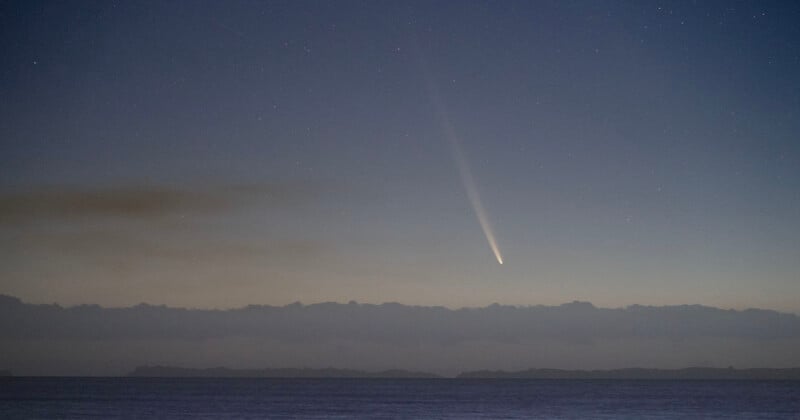 The previous comet, Comet A3, seen from Murrays Bay, Auckland, New Zealand, September 28, 2024. | Photo by AlexL1024
The previous comet, Comet A3, seen from Murrays Bay, Auckland, New Zealand, September 28, 2024. | Photo by AlexL1024After Comet A3 made a once-in-a-lifetime appearance in October, Comet G3—dubbed the “New Year” comet—is currently falling toward the Sun, and if all goes well, it could outshine Venus in the night sky.
It’s a great opportunity for photographers, but there are a few caveats: the first one is that it will only be visible from the southern hemisphere since it is located in the constellation Sagittarius; the second is that first Comet G3 has to survive a close encounter with the Sun when it comes within a meager 8.3 million miles of Earth’s star.
“If, by some miracle, the comet survives the intense thermal stress, it could become visible to the naked eye for observers in the southern hemisphere,” Lionel Majzik, who photographed the comet, tells Spaceweather.com.
Comet G3 will reach perihelion—its closest point to the Sun—on Jan 13. On that day, the comet will be just 0.09 Astronomical Units (AU) from the Sun. If it somehow survives the intense heat, then it could become visible to the naked eye for skywatchers in the southern hemisphere.
If current trends hold, it could even be visible in the daytime. But be warned, the comet will be close to the Sun and therefore dangerous to observe — only attempt to do so with great care.
The comet was discovered by the Asteroid Terrestrial-impact Last Alert System (ATLAS) survey on April 5 by a telescope in Río Hurtado, Chile. Initially, astronomers presumed it was a new comet from the Oort cloud with little chance of surviving perihelion. But as astronomers studied the comet, it was found to be likely an older comet — one that has made close approaches to the Sun before.
Back in October Comet A3, which originated from the Oort cloud, made a close pass to Earth before vanishing into the depths of space for possibly the last time. Astronauts Matthew Dominick and Don Pettit followed its progress from their vantage spot onboard the International pace Station grabbing a few awesome frames of it from orbit.
For photo tips, check out PetaPixel’s comprehensive astrophotography guide.






 English (US) ·
English (US) ·